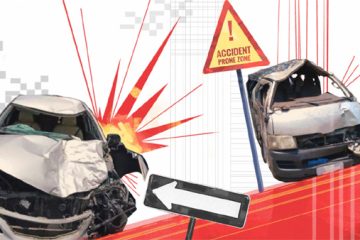DMCH burn unit achieves commendable recovery rate, reduces number of deaths
When success story is rare in public service institutions, the Burn and Plastic Surgery unit at Dhaka Medical College Hospital (DMCH) is an exception with increasing recovery rate and sliding death toll since its inception in December 2003.
The specialised unit can now cure patients with 40 percent burns, up from around 32 percent six years ago. Sometimes patients with 55 percent burns are also cured, claim doctors of the unit.
The commendable success is achieved despite shortage of doctors and nurses. There are 50 doctors and 21 nurses against a requirement of 80 doctors and 125 nurses.
The unit also has no employees though it requires around 200. Only 35 outsiders work there without any remuneration hoping to get the job in future.
Despite all setbacks, the mystery behind the unit’s success is nothing but sincere efforts by a group of dedicated doctors, said Project Director Dr Samanta Lal Sen.
Before its launch there were very few burn specialists and the patients hardly got treatment in an organised manner. But now there are some expert doctors, modern equipment and important medicines, he added.
Death rate at the unit was 17.94 percent in 2004, but it came down to 4.31 percent in 2009, according to statistics. As many as 1,020 patients were admitted to the unit in 2004 and 183 of them died, while the number of patients in 2009 was 11,112 and that of casualties 480.
Dr Sen believes the recovery rate can be increased to 60 percent if the unit got more modern equipment and an ICU able to accommodate more patients. In Japan which is the best in treating burn patients, the recovery rate is over 70 percent, he added.
On the specialised 50-bed unit, Dr Sen said in 1982 late professors Mohammad Shahidullah and Kabiruddin of DMCH felt the necessity for a coordinated treatment facility for burn patients as many got their limbs deformed only because of minor burns.
They started finding burn patients from different wards and providing them with proper treatment. In February 1986 under the leadership of Prof Shahidullah they made a proposal to the government to set up a separate burn unit.
Despite many hurdles they continued pursuing the plan and finally their dream came true in December 2003 under a government project, said Dr Sen, who was a junior doctor under the two late professors and took over the responsibility from his teachers.
A separate eight-bed Intensive Care unit (ICU) has been added to the unit around five months ago, while it got five separate operating theatres (OTs) since its inception. Dr Sen said the OTs need to be fitted with more modern equipment for better treatment and the ICU should have 30 beds.
Now around 250 patients receive treatment at the 50-bed unit at the same time round the year.
Dr Sen also stressed the need for further specialised training for doctors and nurses and increasing the number of doctors.
Insiders say recovery of the burn patients mainly depend on proper dressing by a trained doctor. It is often done by outsiders who have gained some skill by the time. The insiders inform that such dressing sometimes causes excessive bleeding and infection leading to even death of the patients.
Dr Sen admitted the fact saying sometimes outsiders do that due to shortage of doctors.
Despite the laudable successes, there are some dark parts too. Relatives of patients often allege that hardly any doctors and nurses are found in the general wards. Allegations are also rife that doctors do not stay at the unit even during the office hours.
Asked, Dr Sen said he would look into the matter if he receives any specific complaint.
Apart from the DMCH unit, only Chittagong Medical College Hospital got a 10-bed burn unit this year.




















